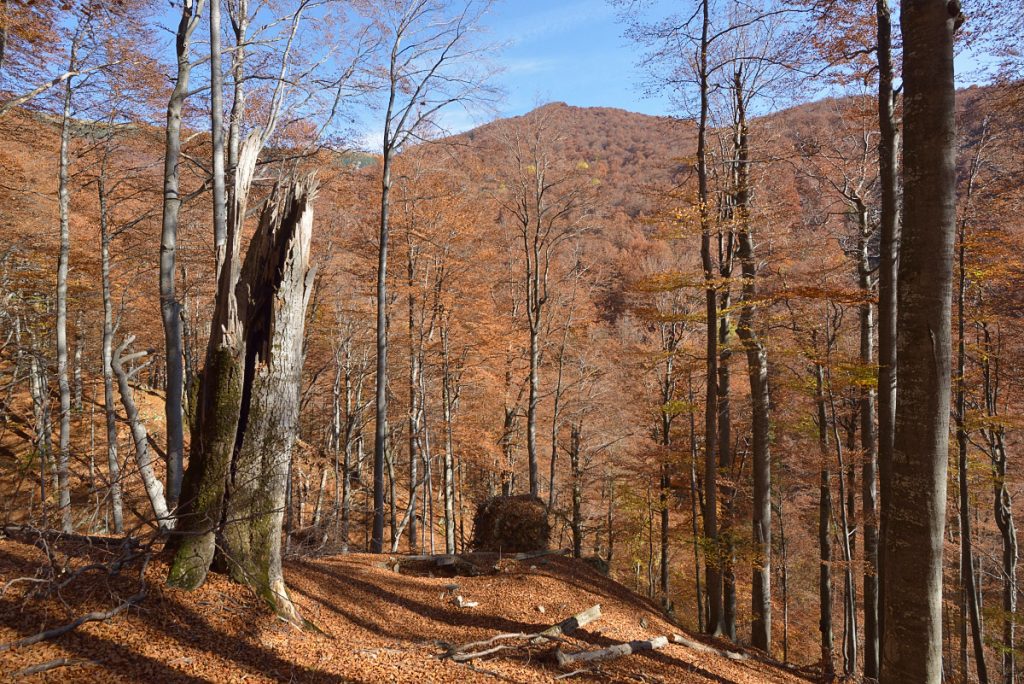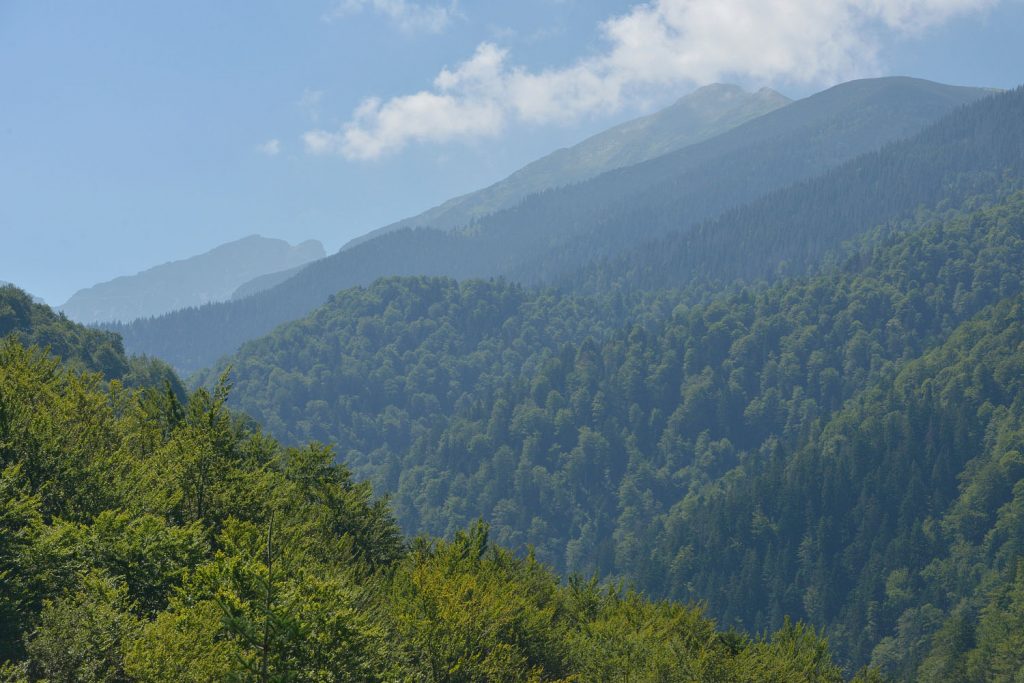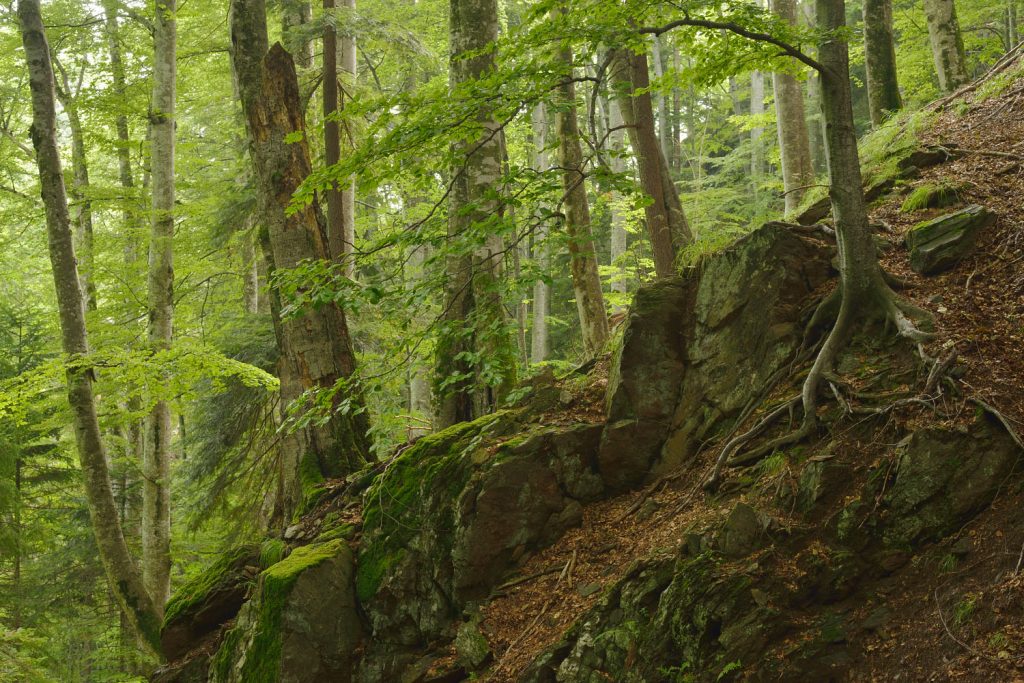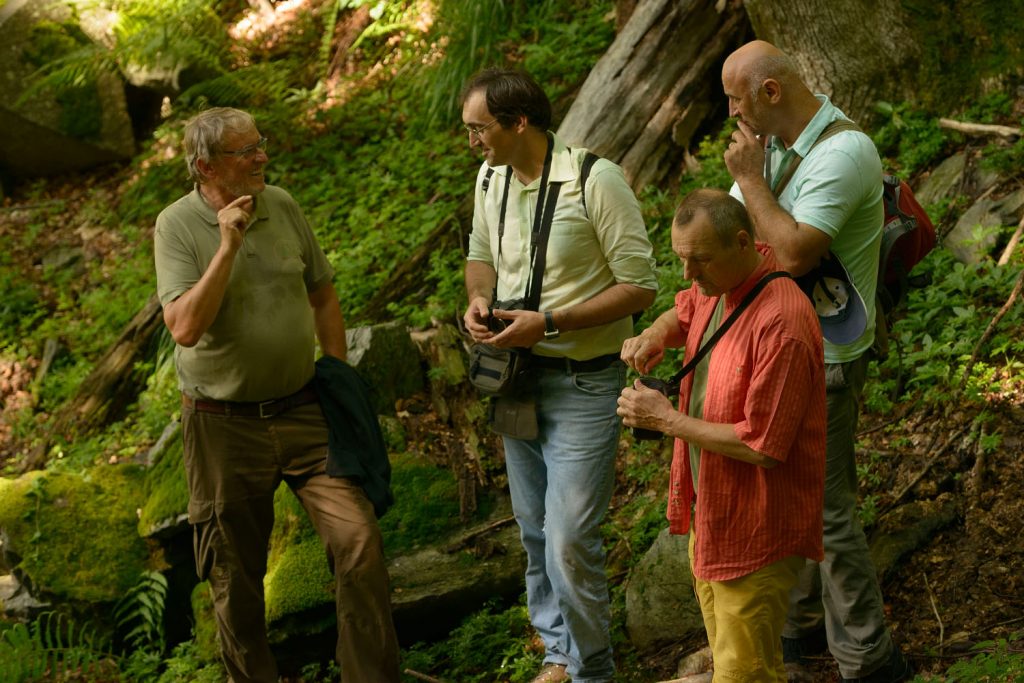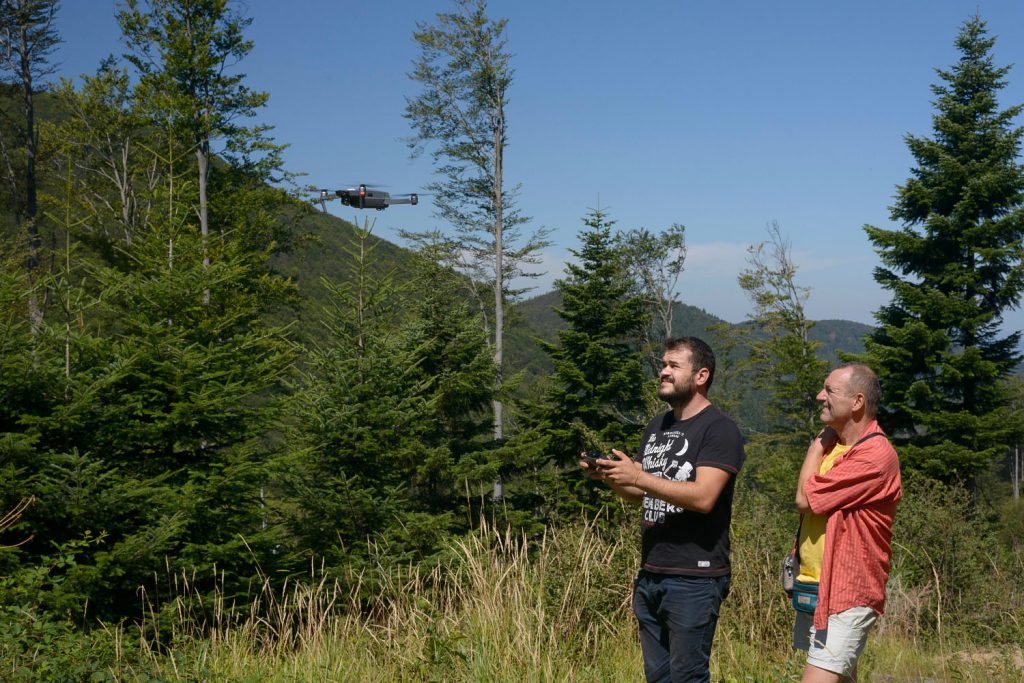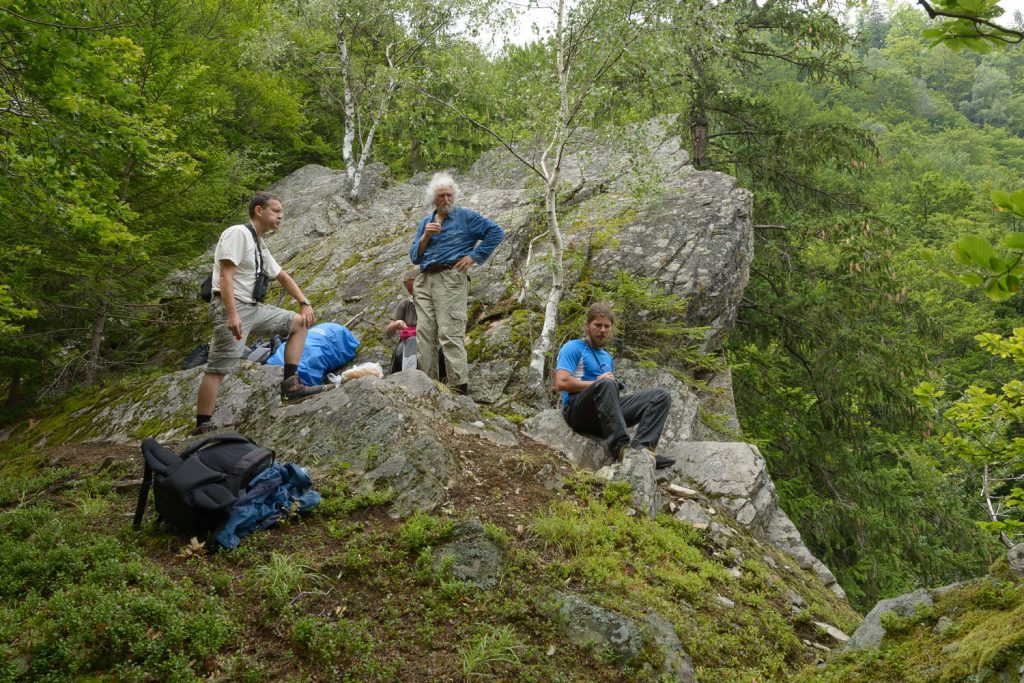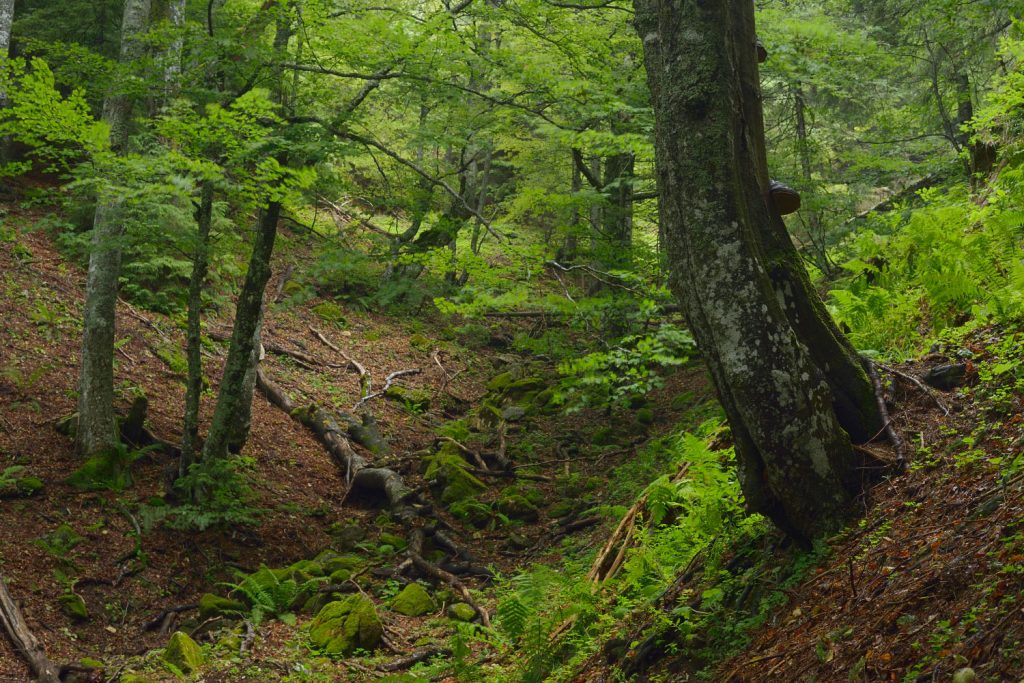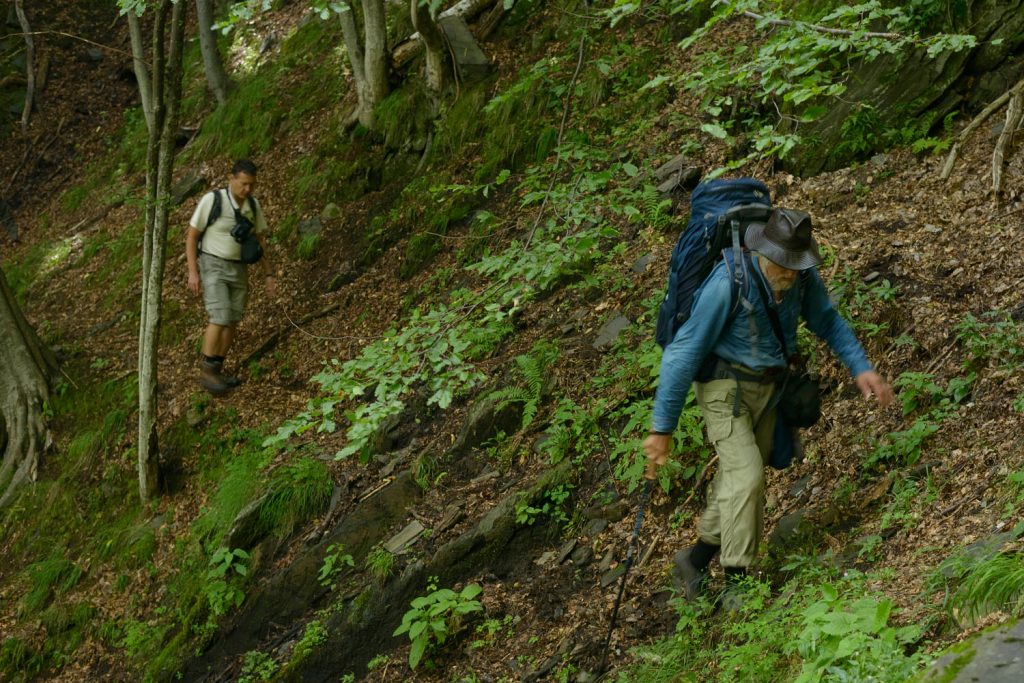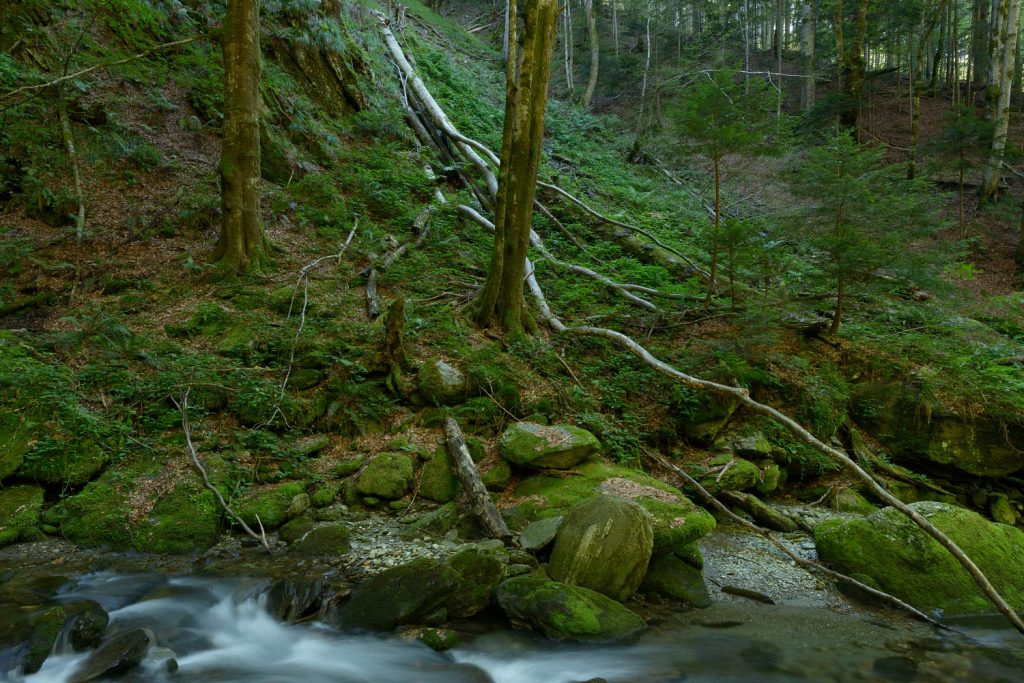Ground truthing trip by German DBU-Foundation funded Forest Mapping Project in October 2017
A team of Romanian forest experts, partnering with a DBU (German Government foundation Deutsche Bundesstiftung Umwelt) forest mapping project, recently visited mountainous areas in the southwestern Carpathians searching for threatened primary forest. Analyses of fresh satellite and aerial images had given indications of the existence of large intact forest areas with logging progressing at the edges. Unfortunately, these ancient forests are not yet protected from logging, even though they are located in the Domogled – Valea Cernei National Park and with the Natura 2000 site, Nordul Gorjului de Vest.
In Romania, more virgin forest has survived than in any other EU country. It is estimated that there are still 200,000 to 300,000 hectares of largely untouched forests in the Carpathian region. Primeval forests can now be reported to authorities and to the Romanian government for protection in its “National Catalogue of Virgin Forests” if their “primeval forest quality” is proven in expert reports. But the necessary mapping and official procedures cost time and money. To date, the government has not allocated budget for this critical conservation task. Therefore, since summer 2017, the German Federal Foundation for the Environment (DBU), thanks to the efforts of Univ. Prof. Rainer Luick (University of Forestry Rottenburg), has been supporting forestry experts in their Romanian mapping work.
In October 2017, a Romanian team of researchers set out in the Domogled – Valea Cernei National Park and the neighbouring Valcan Mountains in the Southern Carpathians to identify unprotected virgin forests and to prepare the necessary assessments for their conservation. The objective of the trip was to identify, map and submit forests for inclusion in Romania’s virgin forest protection system, the “National Catalogue of Virgin Forests”.
Magnificent wild forests survive in the upper catchment area of the Cerna River in the Domogled National Park – Valea Cernei and along the main ridge of the nearby Valcan Mountains. This was the identified through analyses of fresh satellite and aerial photos that the experts conducted prior to their trip. Unfortunately, logging is already gnawing at the primeval forest edges, even though these are national park and Natura 2000 areas. Logging workers are already on site, so it is clear to the experts, that these areas are under acute threat and demand immediate priority listing.
So the team had to spend valuable time informing the forestry authorities about their mapping intentions. This critical research is not always received with enthusiasm by forestry authorities, even though primary forests are supposed to be protected under the Romanian Forest Code and Romanian law. Many of the primeval forests in Romania have not yet been protected because someone, either the forest owner, steward or authority favoured them to be logged and turned into money.
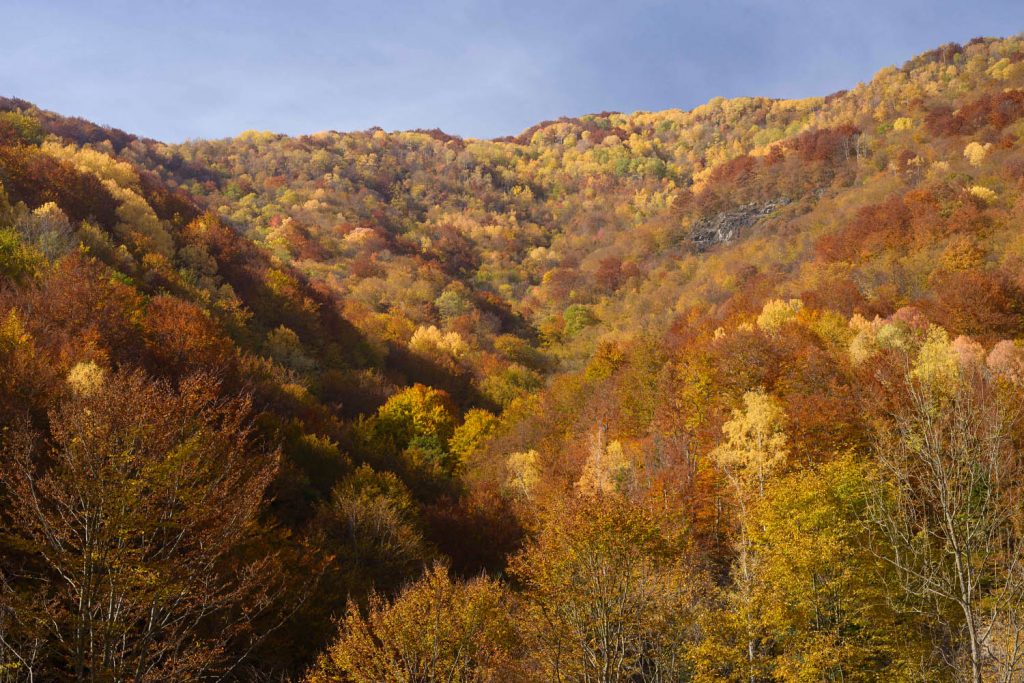
After the inaugural visit to the local forest directors, the forestry experts finally can depart into the wilderness. The team first visited the Cerna Valley, in the heart of the Domogled National Park. Autumn had come to a brilliant climax, and the mixed beech woods were painted with intense orange, red and yellow colours. Due to the wild conditions, a strong four-wheel-drive vehicle is needed to reach upper Cerna Valley. After several hours of bumpy driving through autumnal forest halls, the expedition reached the upper end of the Iovan hydro reservoir and turned into the Radoteasa Valley. To their astonishment, there they found a brand new forest road cut through the forests, allowing easy access to the untouched primeval forest valley, both for researchers and for logging trucks.
The wild forests in the area of Radoteasa, Vlasia and Carbunele valleys have never been cut. Beech forest has been growing here since the end of the last ice age, over 6000 years ago. However, in April 2017, the local forestry authority gave permission to start logging for the first time. Shortly afterwards, the loggers arrived and the southern slope of the Radoteasa Valley was devastated successively in the summer and autumn of 2017. Today, large holes gape in the canopy of the beech forest. The forest floor has been extensively eroded by logging and destroyed for the long term. Excavators have cut brutal swathes through slopes that have never before been touched by humans.
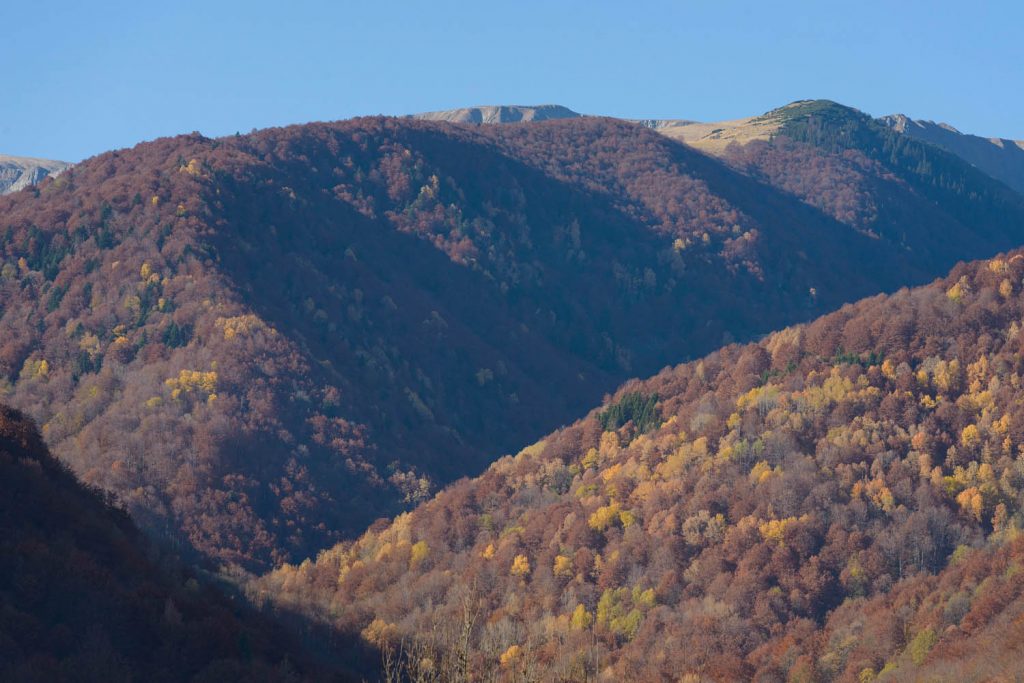
The local population does not get any long-term benefit from the extensive logging in their community. Logging companies and workers often come from other parts of the country, and workers are sometimes treated like commodities themselves. As locals report again and again, they do not see the benefits from the logging of the national park, but some forest managers own luxury cars cars and large houses.
